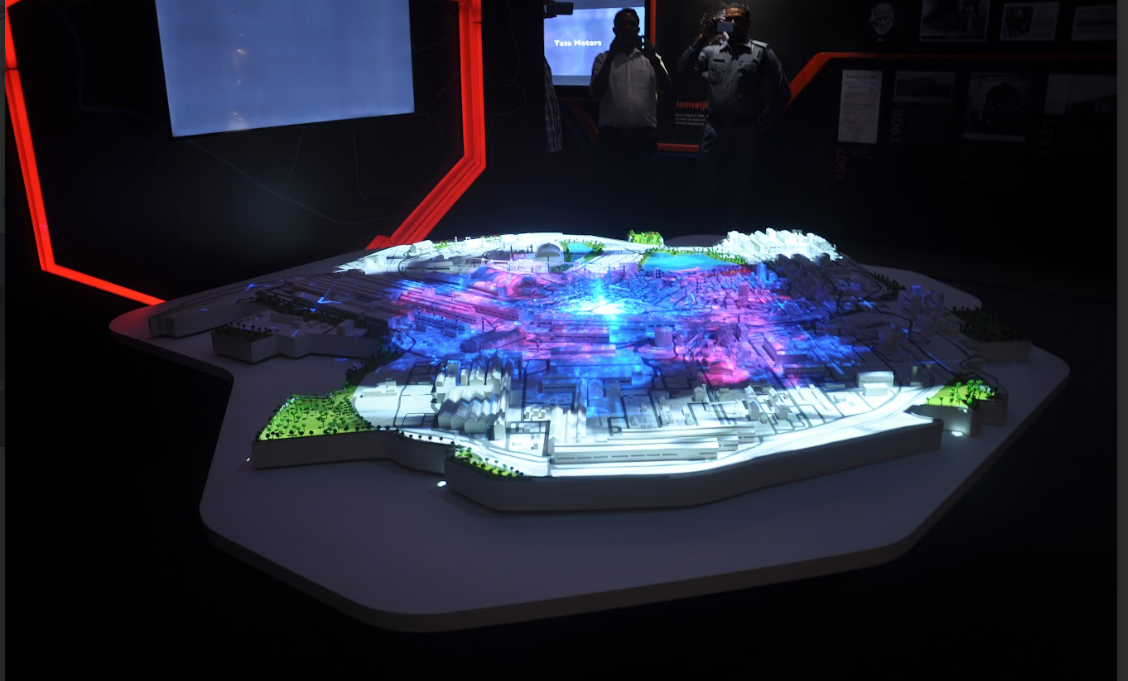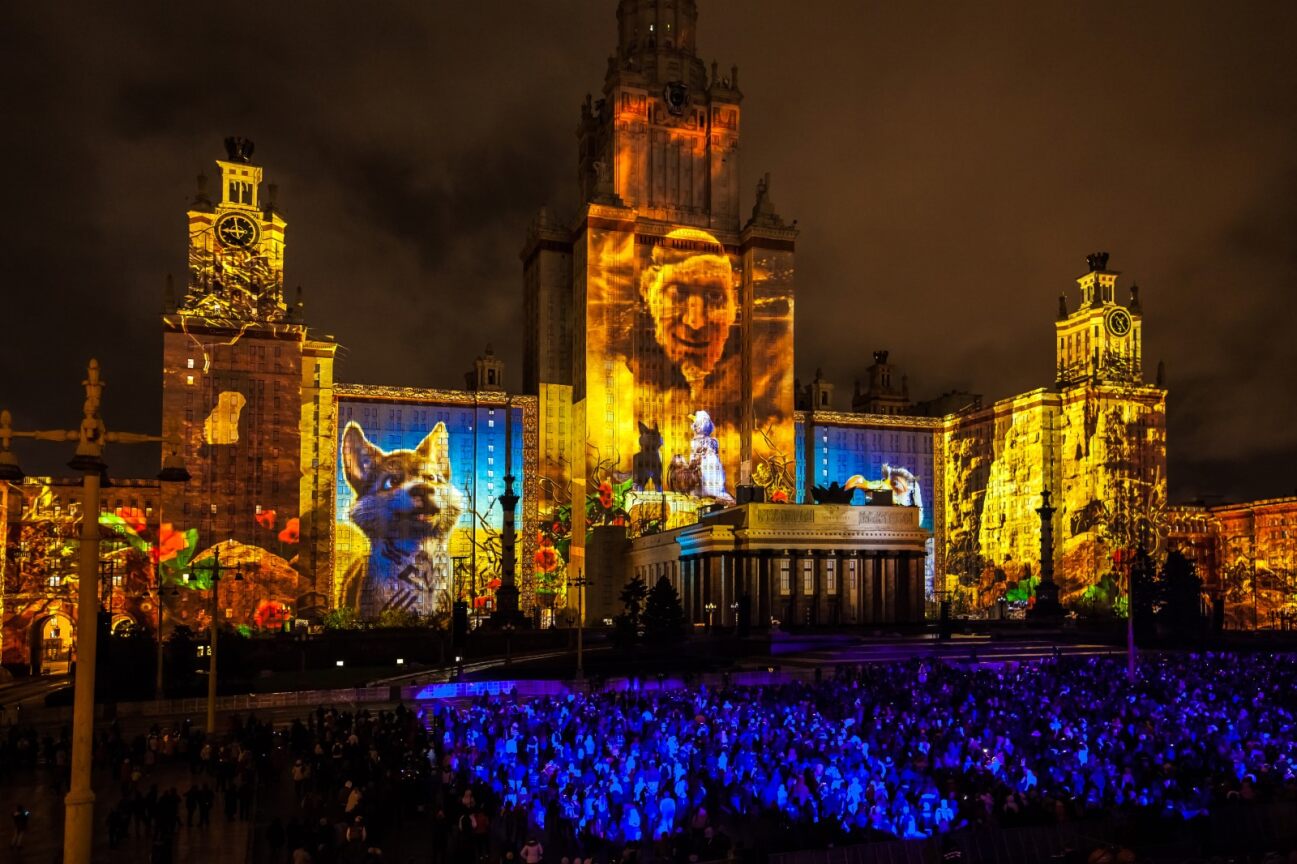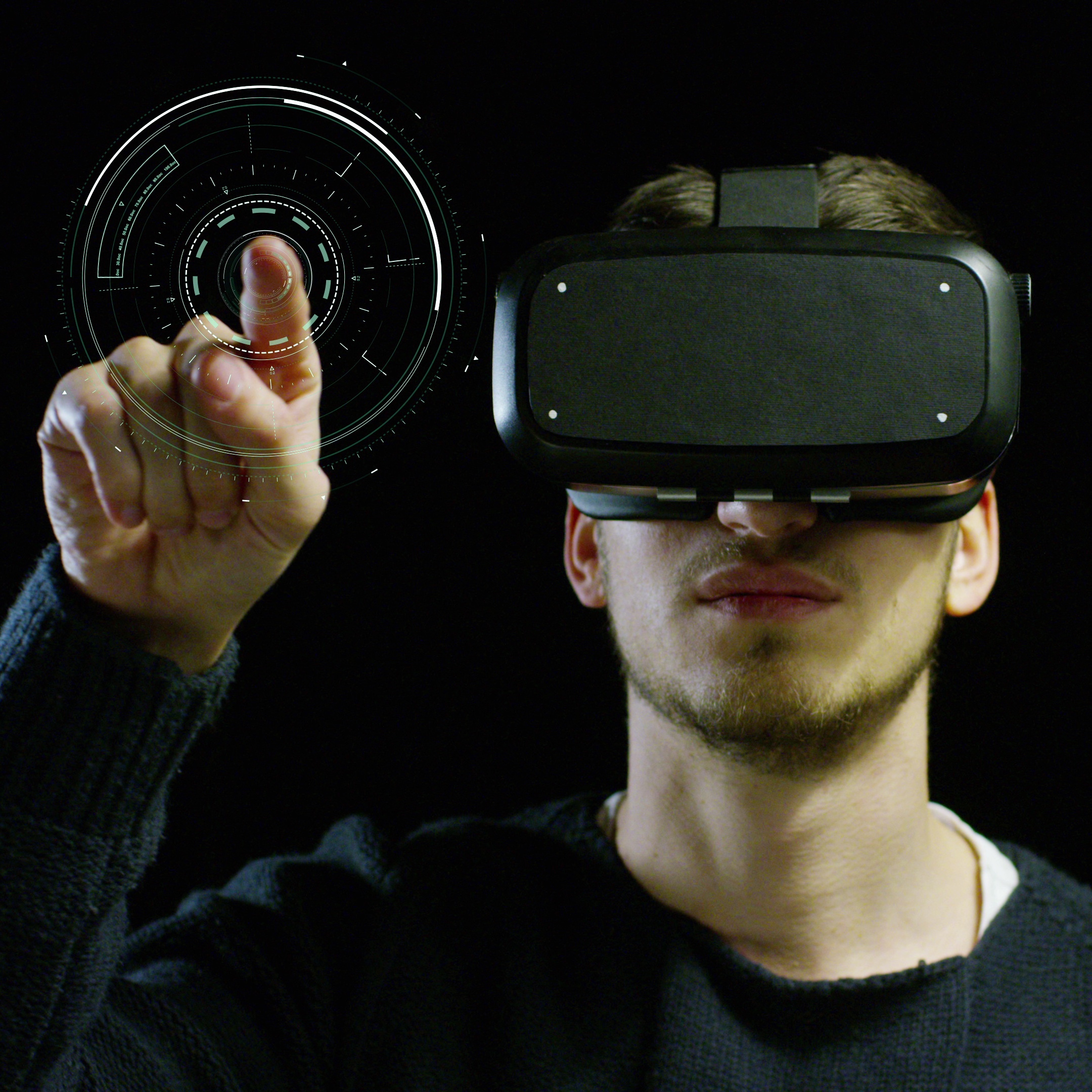The Evolution and Potential of 3D Projection Mapping
Lights, display surface, action!
That’s projection mapping for you. With lights and lifeless objects – anything… a building, a sculpture, or a 3-dimensional model can be brought to life.
Projection mapping is a technological marvel that has changed the game for simple projections. While the latter requires a white screen and a flat surface to clarify the projected images or video, projection mapping can turn any object into a display surface. This makes room for all sorts of creativity. You can project a fireworks display onto a building for the whole block to see, or an entire production can be crafted to tell an immersive and engaging story on a grand scale, like on the Gateway of India or the Adiyogi statue.
Projection mapping is a popular component of immersive experiences. In this blog, we’ll delve into the evolution of projection mapping, get behind the scenes to see how it works, understand its various applications, and look at the benefits and key considerations in its use.
Timeline and evolution of projection mapping
Projection mapping has appeared in various avatars across installations, theater performances, and film over the last several decades. Here’s a lineup of some especially noteworthy instances. There’s even a theme park and a business event on this list!
- 1958 Brussels World Fair
A live performance called Laterna Magika at the 1958 fair is the earliest known instance of projection mapping. The 10-minute act saw dancers, musicians, and singers perform before a backdrop of film footage cast on the background using projection mapping.
This might look very run-of-the-mill today, but it was a novelty back in 1958:
http://www.medienkunstnetz.de/works/laterna-magika/images/2/
- 1969 Disneyland
Many argue that Disneyland’s Haunted Mansion Ride was the first instance of projection mapping since it was the first to use uneven surfaces and no screens. Projection mapping created spooky optical illusions, including disembodied heads who would sing for their audience. The feat was accomplished by projecting footage of singers onto sculptures of their faces, thus animating the sculptures and giving the illusion that they had “come alive.”
This gives a fair idea of how Disneyland might have made its spooky projection mapping magic: https://www.youtube.com/watch?v=cbJC1Q0EI1Y
- 1967 (film) Magical Mystery Tour
The film used projection mapping to create some unbelievable scenes – they projected a cat’s face and a headless male torso onto an actor’s body.
Catch some of these scenes in this quick music video: https://www.youtube.com/watch?v=EWZQhDiQ2_I
- 1980 film installation, Displacements
In this installation, projection mapping was used to create the illusion of people interacting with objects in a room when it was just a projected film of the people taken previously.
Take a look at this way-ahead-of-its-time installation here: https://www.youtube.com/watch?v=bMDr_CFFgWE
- 1984 Broadway
Here, projection mapping was used to project moving images onto a sphere, creating a fantastic effect in the production Sunday in the Park With George.
- 1990s academic project, Office of the Future
As the name suggests, this academic project imagined an office in the future where people could remotely appear in their offices. The idea was to use 3D tele-immersion features on a daily visual interface, enabling colleagues separated by distance to experience a sense of togetherness within a collaborative office setting.
- 2013 Sydney Opera House
This is when the iconic attraction began using 17 projectors, placed at a 200-meter distance, to project images on to its facade.
Here’s what the stunning visual effect looked like: https://en.wikipedia.org/wiki/File:Vivid_Sydney_-_Opera_House_sails_(9002375891).jpg
- Expo 2020
Projection mapping was used to light up and animate the iconic dome at one of the first significant global events post-COVID-19.
As one might expect, Dubai went all out to achieve the positively grand effect seen here:
https://www.youtube.com/watch?v=S_nuX-DQ_sc
- 2023 Victoria Memorial
The Ministry of Culture, Government of India, has launched a 3D projection mapping show on the Victoria Memorial Hall facade, titled ‘Kolkata — The City of Joy,’ that tells the story of the city’s culture and past.
Check out the amazing work achieved in this goosebumps-guaranteed video of the show:
https://www.youtube.com/watch?v=ZpNhZqKwwNE
How does projection mapping work?
It’s fairly easy to understand projection mapping. You’re already aware of how a projector works and does its job, archiving the desired effect of projecting presentations on white dropdown screens in our conference rooms.
With projection mapping, the desired display surface is first spatially mapped using software. The software is supposed to integrate with the projector so that the desired image or video can be projected on the display surface. Of course, brightness, contrast, sharpness, etc., must be adjusted to avoid distortion on the uneven surface. While minor distortions might not look terrible in traditional projections for use cases like corporate presentations, you can imagine how Disney’s Haunted Mansion Ride’s spooky appeal, for instance, would fall flat on its face if the projection wasn’t perfectly aligned and, therefore, believable. Imagine the projected face being too small or too large for the sculpture of the head, for example.
Use cases of projection mapping today.
So, where can this technology be used in our present context? As you would have observed from its lineup of fantastic appearances from earlier in this blog, projection mapping has been used famously by artists who have used it to add extra dimensions, create optical illusions, and render notions of movement onto previously static objects. Here are some present-day use cases:
Cultural storytelling at historical sites
With projection mapping, the history of cultural destinations can be replayed in full color and vividness. Imagine projecting high-quality, accurately mapped images or videos onto a fort, palace, or any other historical-cultural edifice. You could take the audience back in time (or into the future) and showcase life at the fort or palace in its heyday.
Here’s a look at how a game developer enlivened an old castle as part of their launch publicity for their new iPhone app: https://www.youtube.com/watch?v=I1JcFGkzAqk
Process depiction at offices and exhibitions
Businesses often want to showcase efficient manufacturing facilities or processes to investors, partners, prospects, and sometimes vendors. In most cases, getting these stakeholders to a remote factory location is impossible, and even if possible, covering sufficient factory area is often unthinkable. It can also be hazardous. Enter projection mapping. Using a scale model of the factory, overhead projectors, and high-quality videos, entire processes and facilities can be depicted at a convenient location like the brand’s headquarters or a stall at an exhibition.
For example, magineu has used 3D projection mapping to depict factory processes at a steel major’s corporate office.

Optical illusions at amusement parks
Theme parks and amusement parks are ripe for 3D projection mapping. Disney isn’t the only one. 3D projection mapping is also integral to the Soul of the Ocean experience at Ocean Park in Hong Kong where a giant mythological creature and ocean-like scenes are depicted using projection mapping. This is an excellent example of how projection mapping can recreate any environment anywhere.
Grand displays at festivals and events
If you have a big-ticket event on the cards, consider projection mapping. Projection mapping is finding immense favor worldwide as part of events like light shows, art events, and music festivals. They can make for stunning backdrops that become viral photo ops and deliver the wow factor that such events are looking to create. The famous Burning Man music festival’s 2022 edition featured an immersive dome experience created using projection mapping. Another example is last year’s Drone Light Show at the Noor Riyadh Festival. Moscow hosts an annual International Festival of Light with projection mapping as its centerpiece.
Here’s what the grand spectacle at the Noor Riyadh Festival looked like: https://www.youtube.com/watch?v=DLbt74Xpi8U
Benefits and considerations of projection mapping
As with any new technology, 3D projection mapping has benefits and considerations that one must weigh carefully before deciding to commission its use. Here are some of the chief points to think over:
Benefits
Any object becomes a display surface.
The most exciting part about projection mapping is that you can make almost any old thing, even ruins, come alive! This is what lends it its versatility of use cases and exciting applications.
Attention-grabbing and novel
Because it is still a relatively new concept, its somewhat magical and fantastical appeal and the fact that projections are often larger-than-life, 3D projection mapping is a great way to make a statement and grab eyeballs, posts, comments, and maybe even headlines.
Works for any group size
A projection-mapping experience can service an individual, a small group, or even a large crowd of hundreds – or even thousands – of people. Brands can use immersive experiences powered by 3D projection mapping to market to anyone, from a single big-ticket stakeholder to a group of prospects at a launch event.
Device-agnostic experience
Unlike some VR and AR experiences that need an external device like a smartphone or mixed-reality headset to be experienced, projection mapping does not require any specific device for visualization. It can be experienced with the naked eye, thus making the whole experience more natural and immersive.
Considerations
It does not work in high-light environments.
Like any typical conference room projector, 3D projection mapping needs darkness. This means that if you’re using it outdoors, you can only use it after dark. If utilized indoors, care has to be taken so that no sudden burst of light (like a door being opened) can interrupt the spectacle being projected.
High-cost
3D projection mapping technology is still relatively niche and extremely high cost. It could cost as much as $10,000 for just one minute of projection! This might not be affordable for small and mid-size brands and events.
Projection’s future is bright and 3D
With various business and entertainment use cases, 3D projection mapping is an excellent option for marketers and event planners. With sufficient demand to pull more suppliers into the fray, costs might be rationalized. For now, it’s an excellent way for big-ticket events and brands to make a compelling statement.



